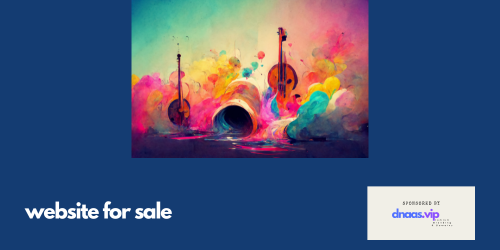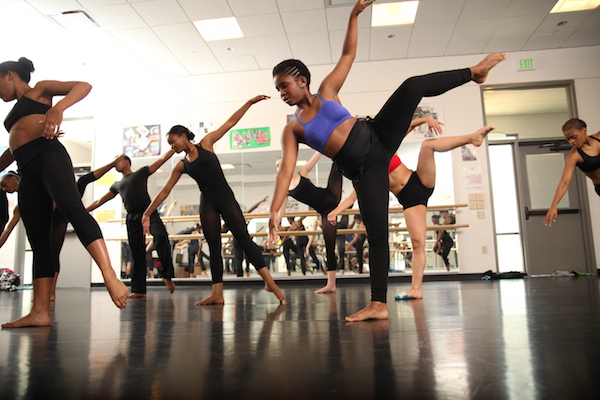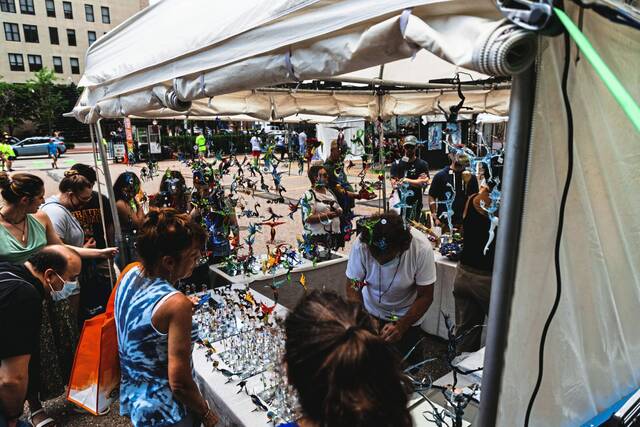
Photo courtesy Auckland School of the Arts.
EdSource’s journalism has always been free for everyone — because we believe an informed public is necessary for a more equitable future for every student. Join our spring campaign as one of 50 new monthly supporters through May 22nd.
Arts education has long been praised for its transformative power as a way to improve everything from test scores to social-emotional learning. Unfortunately, research shows that budget problems have undermined arts education so much that only 11 percent of California schools offer a comprehensive arts education. This is a glaring inequity that arts education advocates have long worked to correct.
“Creativity is a muscle, not a gene, and if it is a muscle, then you can make it stronger,” said Jessica Mellor, a program officer specializing in arts education at the Hewlett Foundation. “The problem is that arts education in this country has historically been governed by assumptions about who can and should be allowed to participate in the arts, and a lot of that has to do with race, class and geography.”
While this dire situation will change in the wake of Proposition 28, the groundbreaking school arts and music initiative that provided arts funding to schools, experts say the future will remain uncertain due to uncertainty about how the program will roll out. The ongoing teacher shortage faces many challenges. Some say such growing pains are to be expected as the roughly $1 billion project moves forward this fall.
“What we’re doing in California with Proposition 28 is truly stunning,” said Proposition 28 author Austin Beutner. Maximum investment. This has never been done before.
The sheer scale of the plan may also explain why there’s a slight worry among those in the arts community that the huge funding boost expected to arrive sometime this fall must be too good to be true.
“Many people in arts education have felt like they’ve been marginalized for so long that it’s hard for them to imagine anything that would center them,” Mailer said. “There are a lot of people in this field who still say, ‘I’m going to believe this when the money comes to my school.'”
A key challenge is the lack of clarity on the details of how this game-changing program will work. Many people are still unsure about the rules, from exemptions to audits.
The theme is clear. All money must go to arts and music education, but that’s broadly speaking. Subjects include (but are not limited to) dance, media arts, music, drama and visual arts including folk arts, painting, sculpture, photography, arts and crafts, creative expression (including graphic arts and design), computer coding, animation, music composition, Ensemble, scriptwriting, costume design, film and video. Each school community is invited to tailor the program to the needs of their students.
“Take inventory and talk to your family,” said Allison Gamlen, visual and performing arts coordinator for the San Mateo County Office of Education. “Is it important to you that your child dance? Or have access to music or visual arts? Do you want your child to learn media arts skills so they can find careers in Silicon Valley? Survey your students.
However, some arts education advocates worry that a lack of specificity could undermine the program. Estimates of how much money each district will receive are available, but some say the rules for how the money will be spent remain unclear.
“The lack of guidance (from CDE) has hindered local funding planning,” said Abe Flores, deputy director of policy and programs at arts advocacy group Create CA. “Without staff or timely guidance, we were concerned that the prop would fail.”
Some say the CDE, which administers the scheme, has not yet responded sufficiently to how to deal with the complexity of the process.
“I would like to reiterate the lack of guidance from CDE on calculating baselines, which is critical to ensuring that it ‘supplements, not replaces’ requirements and outlines the exemption process,” Flores said.
Schools with more than 500 students must spend 80% of their funding on staff. Furthermore, the money must be used to supplement existing funds, not replace them. If a school spends $100 this year, they can expect to spend $100 next year plus new funding.
Some school administrators believe existing funds are a baseline that proposed funding cannot replace and should not include one-time contributions.
Deputy Superintendent Malia Vella clarified that the baseline is defined as all existing funding and “no exemptions are currently available.” However, she is still awaiting cleanup language in the upcoming state budget preview bill before issuing technical guidance. She also noted that the California Department of Education is updating its website with frequently asked questions and recommended that arts administrators subscribe to the Proposition 28 list service at join-prop28@mlist.cde.ca.gov.
“We do want clarification and audit guidance,” Vera said. “It’s very difficult to issue guidance and then say funding has changed, that’s a technical issue. “I don’t think it’s good for our local education agencies to issue guidance and then immediately change it. “
This is one reason why many arts educators are currently taking a wait-and-see approach. It’s worth noting that schools have three years to use the funds.
“We’ve discussed some ideas, but honestly, I don’t want school principals to start making a lot of plans until we’re pretty sure what they can do with it,” said Phil Rydeen, coordinator of visual and performance arts for the Oakland Unified School District. “There’s still some general ambiguity.”
Another challenge is staffing. An estimated 15,000 art teachers are needed across the state, but experts say there are currently only about 5,000 qualified art teachers in the field.
Against the backdrop of a shortage of existing teachers, some worry there could be a hiring frenzy.
“There are more jobs than people,” said Eric Engdahl, professor emeritus at Colorado State University East Bay and former president of the California Council on Teacher Education. “We’ve been hungry for so long, and suddenly someone’s giving us food. We didn’t know what to do with the last party.”
Part of the problem is that the arts credentials pipeline has shrunk after decades of cuts. While the state has 64 programs offering certificates in music and 57 programs offering certificates in visual arts, there are only four programs that focus on theater and two that focus on dance.
However, experts say the talent pool is broader than it seems because there are many solutions. For example, experts say physical education teachers certified before 2022 will already have dance included in their certification. The same is true for some English teachers who automatically have a theater certificate.
Plus, technically, you don’t need a certificate to teach art. Proposition 28 requires that at least 80% of funds be used to hire employees, but they may be “certified or classified” employees. This means that working artists can (and some say should) be a part of it, as long as the classroom teacher is also present.
“We are fortunate in California to have a diverse talent pool. We have a diverse range of practicing artists, some of whom can make great art educators,” said Beutner, a former superintendent of the Los Angeles Unified School District. “Right now, the talent and the schools are not a match. So we’re working hard to make the initial connection as seamless as possible.
Beutner hopes to connect working artists with schools in their midst. Schools gain access to professional artists, and artists gain financial stability rare in the art world. Additionally, if they find a passion for teaching, they may decide to pursue a certificate, which can ensure a higher salary.
“It’s incredible to have a professional artist walk into the classroom,” Mailer said. “They represent what it’s like to be an artist. They show kids that this is a possible career path. They’re also not part of the school community, so kids can often open up to artists.
Beutner believes that connecting the two worlds is crucial. One idea is a revamp of JammCard, an art app similar to LinkedIn, Schoolgig.
However, some people believe that art teachers should be certified because education requires specific expertise. Some warn that artists may not be ready for the rigors of the classroom, especially in a post-pandemic era of learning loss and inappropriate behavior.
“Being a great artist or musician doesn’t necessarily mean you’re a great teacher,” said Tom DeCaigny, executive director of arts advocacy group Create CA. “Demonstration programs usually require extensive training in classroom management, child development theory, curriculum structure, learning styles, pedagogy, etc. … In other words, good teaching is not a ‘performance’.
The best-case scenario, many believe, is to find ways to leverage the talents of teachers in both arts.
“There’s always been this tension between the value of teaching artists and the value of qualified teachers,” Mele said, “but they’re both valuable.”
In addition to personnel costs, remaining funds are available for other needs, including training, supplies and partnerships with arts education organizations. No more than 1% can go to the administrative department.
Some arts managers want more leeway in how funds are spent.
“If I had my way, if I could wave a magic wand,” Ledding said, “I would want that flexibility.”
Beutner believes that a strong investment in arts teachers will pay dividends in the vitality of the entire school community, enhancing its socio-emotional culture.
“People want schools to build a program around a dedicated teacher who becomes part of the community,” he said. “Continuity of people and projects is important.”
For example, if you need to invest in a musical instrument or a kiln to start a new project, you can apply for an exemption from the 80/20 rule, but you must show “good cause.”
“An example of a public good would be a school that is offering a music program. The first year, they might need to buy instruments and then just replace or repair a small part of them,” Beutner said. “So they can request a waiver to spend 40% of the money on instruments in the first year, and then in subsequent years they’ll spend 90% on teaching staff.”
To clarify the process and share ideas, Beutner is currently working on a YouTube channel featuring how-to videos and best practices from arts educators across the state.
“The cross-pollination of great ideas doesn’t happen overnight, but that’s what we’re trying to foster and facilitate,” Beutner said. “We have to build capabilities and empower people to make good decisions.”
In arts education, as in art, collaboration is often key. For example, a small school in a rural area might partner with another school to share a dance teacher.
“The most effective way is as a coalition, collaboration between everyone involved. It’s teachers, it’s parents, it’s students, it’s arts organizations, it’s artists teaching, it’s school districts, it’s teacher education programs,” Engdahl said. “It’s a big tent but we all have a role to play and we all need to work together.”




